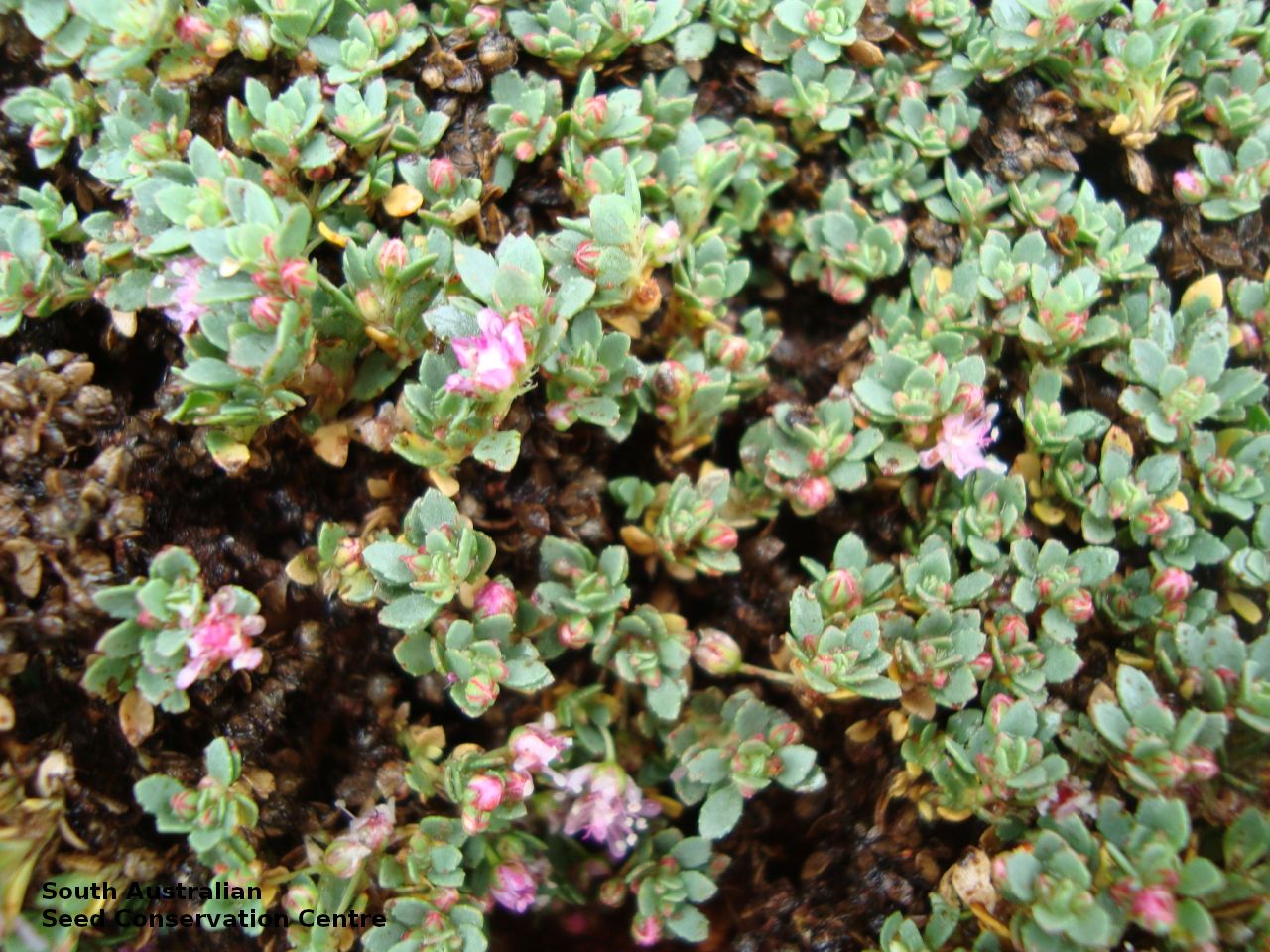
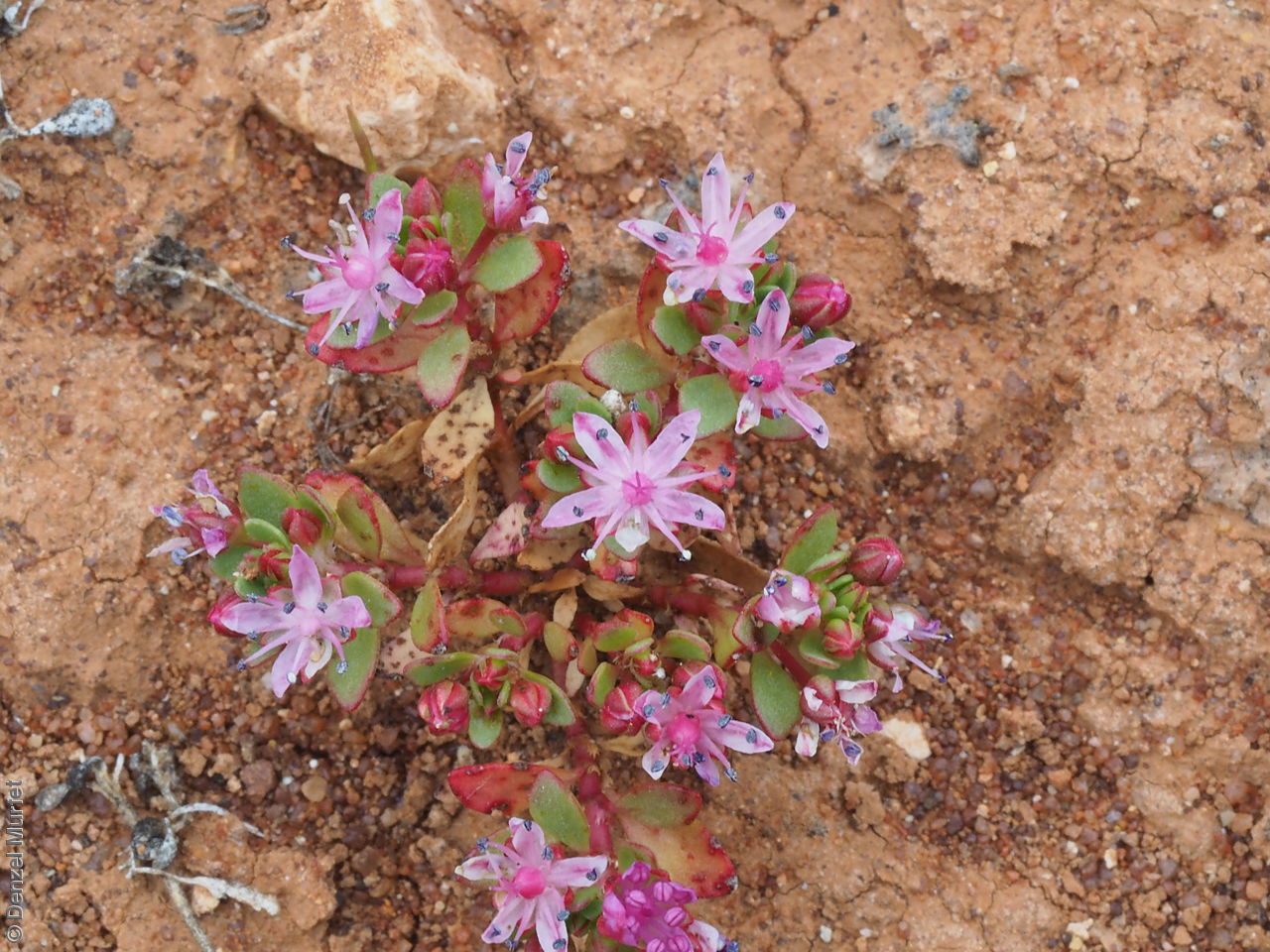
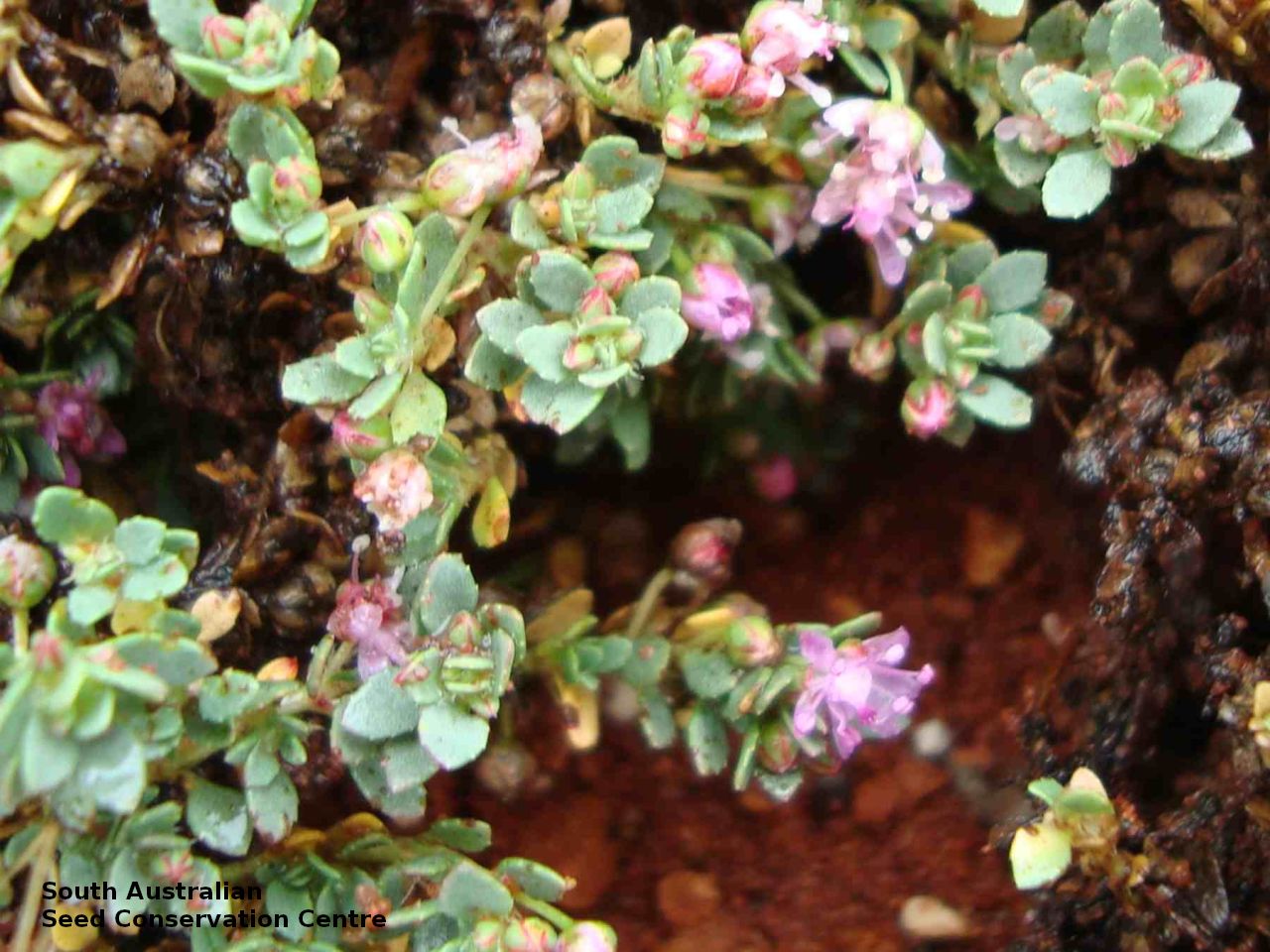
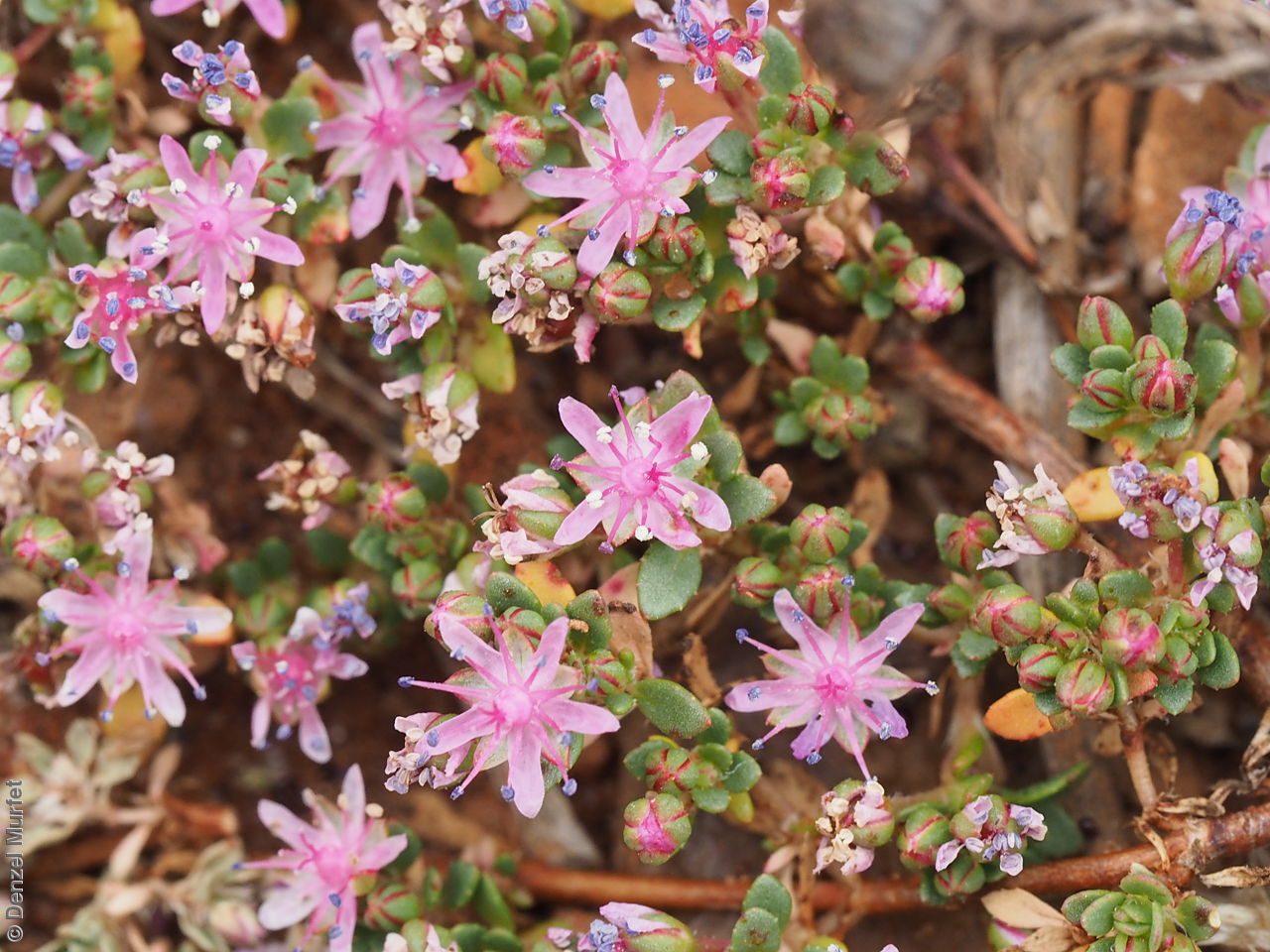
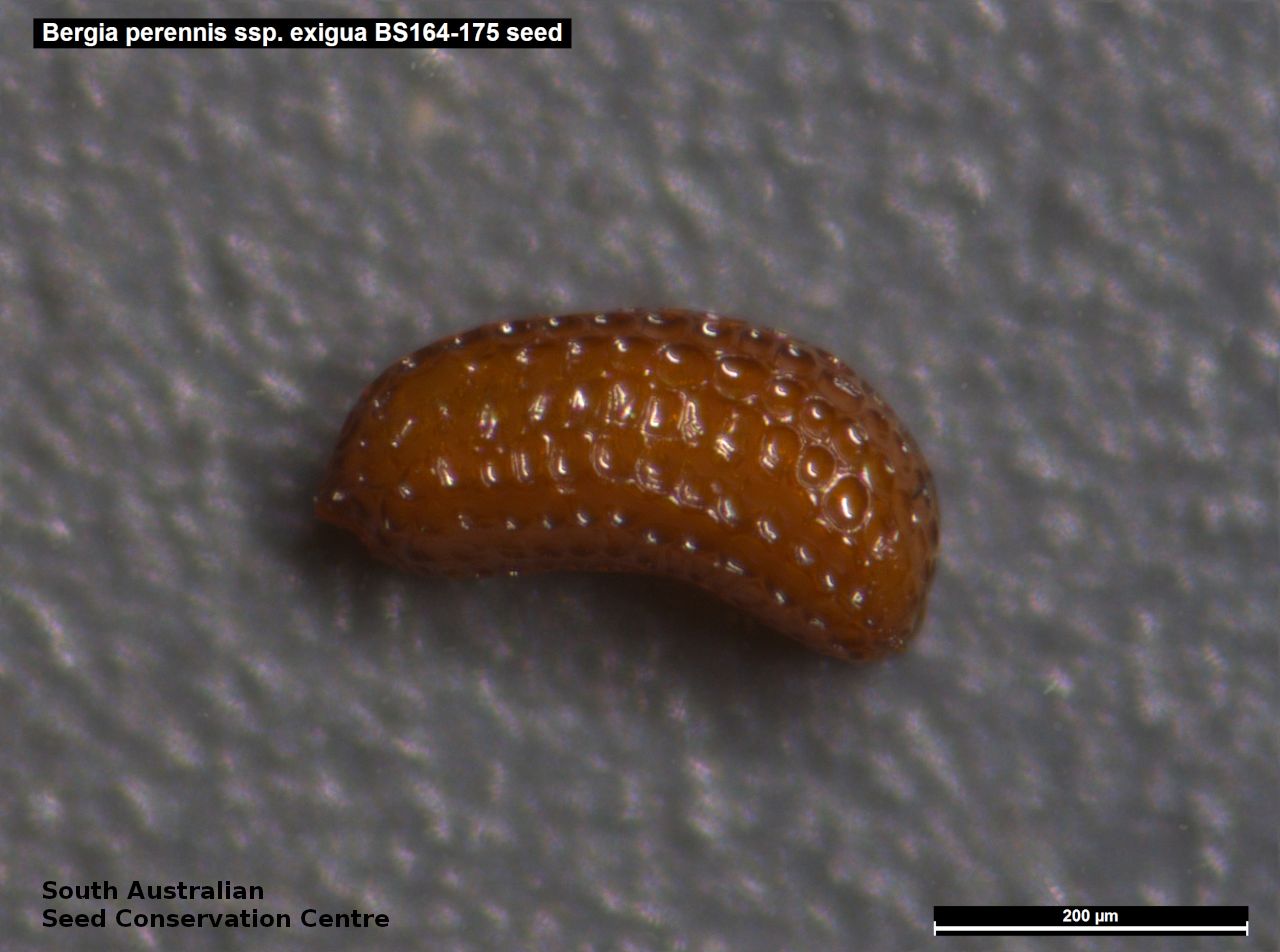
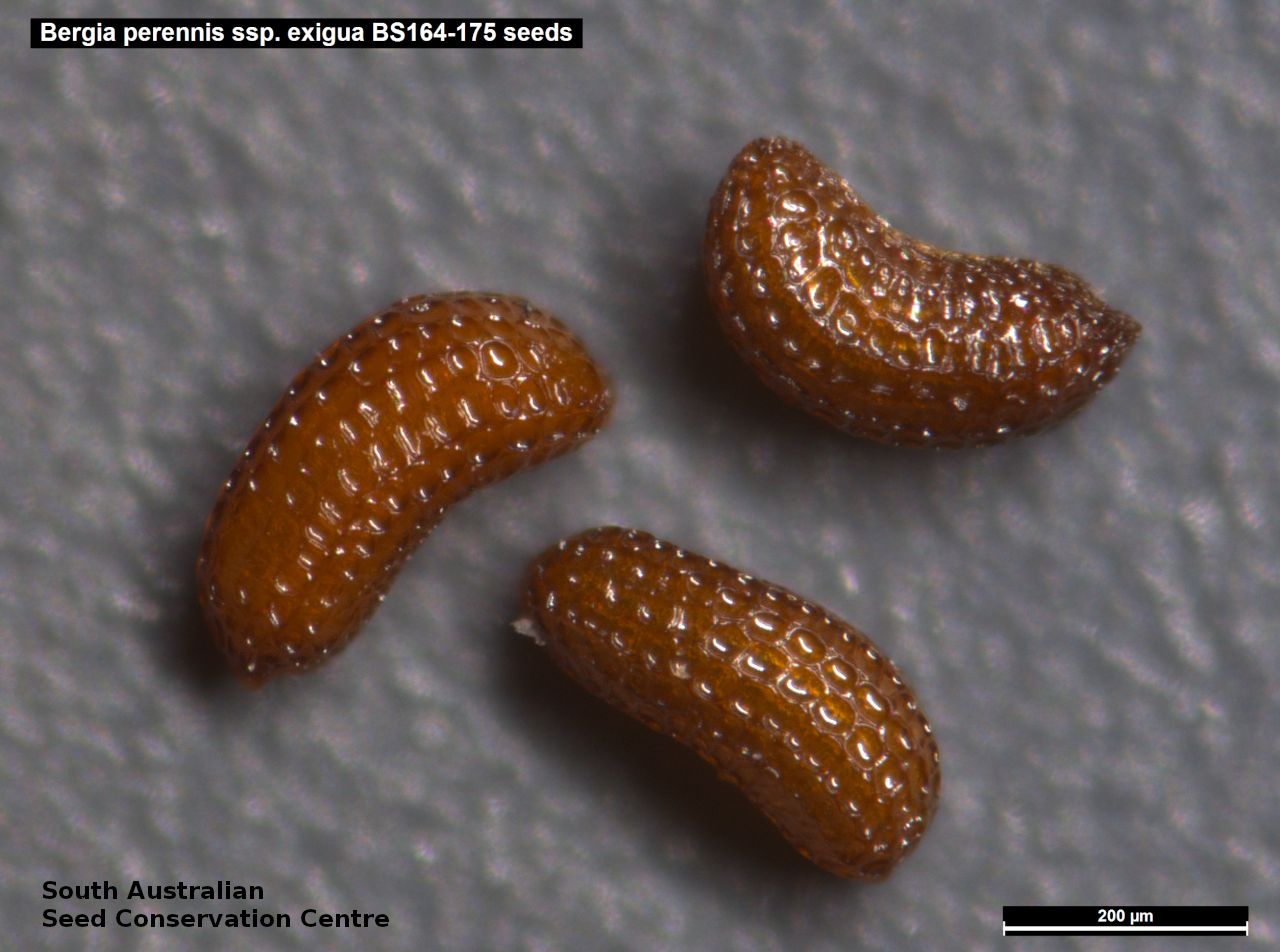


Prior names
Bergia sp. aff. pedicellaris (F.Muell.)F.Muell. ex Benth.
Common names
Small Perennial Water-fire
Perennial Water-fire
Etymology
Bergia named after Dr Petter Jonas Bergius (1730-90), Swedish physician and botanist. Perennis from the Latin 'per' meaning through and 'annus' meaning year; referring to the perennial nature of this species. Exigua from the Latin 'exiguus' meaning small, meager or sparse; referring to the diminutive nature of this taxon relative to the other subspecies of Bergia perennis.
Distribution and status
Found in the north central part of South Australia, growing predominantly on clay pans. Also found in Western Australia and Queensland. Native. Uncommon in South Australia. Uncommon in Queensland. Common in Western Australia.
Herbarium regions: North Western, Lake Eyre
NRM regions: Alinytjara Wilurara, South Australian Arid Lands
AVH map: SA distribution map (external link)
Plant description
Prostrate perennial herb. Indumentum of long type a glandular hairs or lacking. Leaves elliptic to broad-elliptic, to 5 mm long and 2 mm wide, acute, rarely obtuse, margin entire to serrate. Stipules to 1.5 mm long. Bracteoles usually conspicuous, to 1.5 mm from base of pedicel, which is 1.5 mm long and 0.2 mm wide. Sepals ovate, to 2 mm long and 1 mm wide, acute. Petals to 2.25 mm long and 1 mm wide, barely exceeding sepals, pink to white. Stamens to 1.5 mm long. Flowering between April and October. This subspecies differ from the other subspecies found in South Australia by having leaf apex obtuse (acute in B. perennis ssp. obtusifolia) and bracteoles obscure at base of pedicel (conspicuous, mostly well above base of pedicel in B. perennis ssp. obtusifolia) and sepals mostly greater than 1.5 mm long (mostly less than 1.5 mm long in B. perennis ssp. obtusifolia). Fruits are globular capsule to 1.75 mm long and 1.75 mm wide. Seed embryo type is linear.
Seed collection and propagation
Collect seeds between July and December. Collect stems with maturing capsules, those that are fat, drying off and contain brown seeds. Place the stems in a tray and leave to dry for one to two weeks. Then rub the plant especially the capsules gently by hand to dislodge the seeds. Use a fine sieve to separate the unwanted material. Be very careful as the seeds are very small. Store the seeds with a desiccant such as dried silica beads or dry rice, in an air tight container in a cool and dry place.